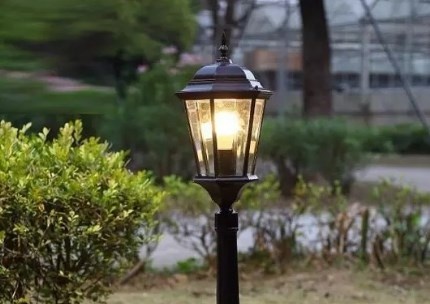Introduction to the application of MCPCB in lighting systems
- Views
- 31 Jan 2024
The rapid development of the LED industry, especially high-power LED lighting, has triggered concerns about heat dissipation. Metal core PCB can be used in circuits where a lot of heat is generated and the heat needs to be dissipated quickly to avoid damaging components. These boards have good thermal conductivity and dimensional stability. The aluminum core reduces the overall weight of the circuit board. These LED are usually mounted on a PCB and can therefore create problems in the circuit. Without the right techniques, heat dissipation can impact the performance of electronic devices operating at high power. It turns out that using a metal core in such applications can solve this problem.

What is a metal core PCB?
Metal Core Printed Circuit Boards (MCPCB), also known as thermal PCB, use metal materials for their substrates instead of the traditional FR4 for the heat sink segments of the circuit board. During circuit board operation, some electronic components generate heat. The purpose of metal is to transfer heat from critical circuit board components to less critical areas, such as the metal heat sink backing or metal core. Therefore, these PCB are suitable for thermal management.In a multi-layer MCPCB, the layers will be evenly distributed on each side of the metal core. For example, in a 12-layer board, the metal core would be in the center, with 6 layers on top and 6 layers on the bottom.
Why Choose Metal Core PCB?
Excessive heat buildup in printed circuit boards can cause equipment to malfunction. Power supply equipment that generates large amounts of heat cannot always be cooled using conventional fans. Conduction cooling via metal core panels is ideal. In conduction cooling, heat is transferred from a hot component to a cooler component through direct contact. This works well because heat is constantly seeking to move to any cooler object or medium.Types of metal substrates used in MCPCB
It is mainly divided into two metal base materials: aluminum core and copper core. Because the aluminum core is relatively light in weight, it is mainly used in LED lighting, audio equipment, and communication electronic equipment. Copper core has better performance than aluminum core, but most customers will choose aluminum because copper is more expensive. In addition, the copper core is heavier, so the processing process will be more complicated. Copper cores are more susceptible to corrosion than aluminum.Advantages of MCPCB
These have the ability to integrate highly thermally conductive node polymer layers to withstand thermal resistance. The higher the electrical conductivity of the material, the faster the heat transfer. Metal substrates are durable and more conductive than epoxy resin products. Power supply equipment is implemented in high-vibration applications, and since the metal core reduces vibration, components are less likely to fall off.Single-layer PCB ensures that LED bulbs and equipment have the lowest possible operating temperature and maximum brightness, so MCPCB with heat dissipation function is suitable for use in LED lighting products.
MCPCB in lighting systems, custom led circuit boards, led printed circuit board,
Related Blog
- What is Thermal and Electrical Separating Pad in Metal Core PCB?
- LED PCB Assembly Process: Step-by-Step Guide for Beginners
- Why Always Recommend White Solder Mask Black Silkscreen for Aluminum PCB?
- What Materials Are Commonly Used for Manufacturing Lighting PCBs?
- Everything You Should Know About Metal Core Circuit Board
- What Are the Differences Between Ceramic PCB, Metal Core PCB And Standard FR4 PCB?
- Why Choose Best Technology As Your MCPCB Manufacturer?
- What is LED Light Circuit Board and How to Make it?
- When is International Labour Day in 2024 and What are the Significances of It?
- How Does A Convexity Comes Out On Thermoelectric Separation Copper Based PCB?
- Why is Aluminum LED PCB Important for Indoor Growth Lights?
- Application of Metal Core Pcbs in the Development of LED Technology
- Why Choose White Solder Mask for Metal core PCB When Used In LED Devices?
- Understanding Aluminum LED PCBs in 1000w LED Grow Lights
- What Are the Advantages of Metal Core PCB? How to Choose?
- Automotive Light Copper Core Pcb Production Process—testing
- Why Are Metal Core PCBs, Especially Copper Core, Used In Heat-Sensitive Electronics?
- How do aluminum LED PCBs improve LED efficiency?
- What Are the Differences Between Regular and Thermoelectric Separation Copper-Base PCBs?
- Aluminum PCB VS FR-4 Performance Comparison



